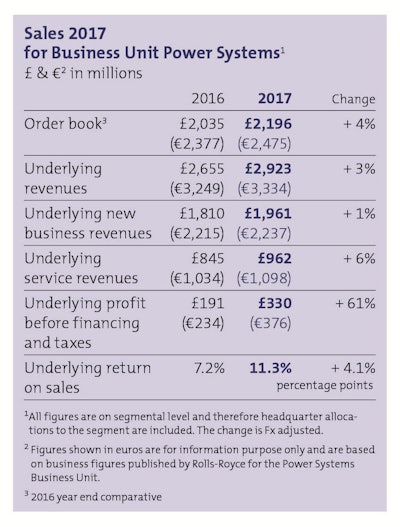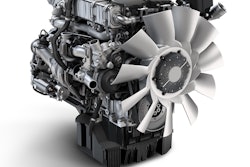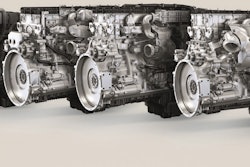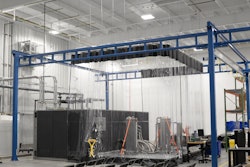“Rolls-Royce Power Systems delivered a strong performance in the financial year just ended and has held its ground well against the competition,” CEO Andreas Schell said during a press conference on the financial results for the year 2017 on March 7 in Friedrichshafen. “We have achieved a turnaround in terms of revenue, profit and order intake, a major contribution to this being made by our RRPS 2018 business transformation program.” 
Underlying revenue was up 3% to 2.92 billion pounds sterling. Return on sales also rose significantly to 11.3% (+4.1 percentage points). As a result, with a profit of 330 million pounds, Rolls-Royce Power Systems reports a 61% profit increase compared with the previous year. The order book standing at 2.19 billion pounds sterling is very healthy and shows a 4% improvement on 2016. With this result for 2017, the Power Systems division with its core brand MTU accounts for 19% of the total revenue generated by the Rolls-Royce Group and is thus once again the second strongest revenue driver in the group, which in 2017 was organized into five businesses.
“The year 2017 has put us back on track for success,” says Marcus A. Wassenberg, Chief Financial Officer at Rolls-Royce Power Systems. “We benefited on the one hand from the growing market and the good performance of the global economy. What clearly contributed to the excellent result was the fact that, with our RRPS 2018 transformation program, as a result of optimizing costs, service and sales, we were able to significantly improve our profit situation.” Detailed product analysis resulted in a 25% reduction in product variants, which, together with improvements in material costs, quality control, stocks and use of facilities, ultimately led to significant savings.
More business in service and products for the energy, agricultural and construction sectors, and for the oil and gas industry
The service initiative bore fruit in 2017 – total service revenue was up 6%, due primarily to business in MTU Reman engines and services provided for the invigorated oil and gas business in the USA.
One third of the total revenue of Rolls-Royce Power Systems in 2017 was again generated by the energy sector, which continues to be a viable future business field. Additional growth was achieved primarily in diesel systems for emergency gensets, e.g. for data centers in China and the USA. Business in medium-speed engines manufactured by the subsidiary Bergen Engines A.S. stabilized in 2017, due principally to orders for the delivery of power generation systems together with the associated service.
Declines were reported in the business in engines and systems for ships, which also accounts for one third of the total revenue. This was due primarily to a decline in sales of yacht engines compared with the previous year. In the extremely competitive commercial marine market (engines for ferries and work boats), the company achieved an increase in revenue. This is a market that has great future potential for Rolls-Royce Power Systems. Sales of products for navies increased as well.
Sales of engines for the construction, agricultural and industrial sectors increased significantly in 2017. The further development of engines in the lower output range in anticipation of the EU’s new Stage V emission standards scheduled to come into force in 2019 resulted in large-volume orders. One of the major customers is the agricultural machinery manufacturer Claas. 
Due to the recovery of oil prices and the increased demand for raw materials, sales of MTU engines and systems for the oil & gas industry and mining vehicles were up in 2017.
Delivery of first green and high-tech products
Rolls-Royce Power Systems in 2017 reported successes as a result of its Green and High-Tech program, with which the company is making targeted investments in environmentally-friendly solutions for the future designed to reduce pollutant emissions and the consumption of both energy and raw materials. The first MTU Series 4000 mobile gas engines were delivered to the Dutch shipping company Rederij Doeksen. The engines are so clean that they are allowed to operate on the Wadden Sea nature reserve. In the San Francisco Bay area, the first MTU diesel engines meeting the stringent EPA Tier 4 requirements will enter service before the end of 2018. WETA, the San Francisco Bay Area Emergency Transportation Authority, is putting its trust in the new integrated MTU propulsion system consisting of Series 4000 diesel engines and an SCR exhaust gas aftertreatment system for its new high-speed ferries.
Progress being made on the way to becoming a solutions provider
“In the 2017 financial year, we made considerable progress on our way from being purely an engine supplier to becoming a solutions provider that supplies its customers with drive and propulsion systems and their permanent availability,” Schell explained. Since last year, Rolls-Royce Power Systems has provided its customers with support from experts in its new Customer Care Centers in three different time zones. New digital tools, such as MTU’s GoAct app or MTU’s GoManage internet platform, are designed to significantly improve the quality of service provided. They are being developed by an in-house digital unit set up in 2017.
Agenda 2018: growth, consistent digitisation and electrification, plus increased business in Asia
“For 2018, we expect the present healthy, dynamic performance to continue – we aim to achieve further growth, but we intend to maintain our flexibility and continue to rigorously implement our business transformation program. This is due to the fact that we are dependent on volatile end markets,” Schell said, looking to the future. “Our agenda includes consistent digitization specifically for customers and service, in addition to the electrification of our drive and propulsion systems. 2018 will also be an important year for our new partnerships in Asia, which will enable us to increase our production capacities and market access in key focus markets. This means we now have engine and system production facilities in three major regions – Asia, America and Europe.”

















